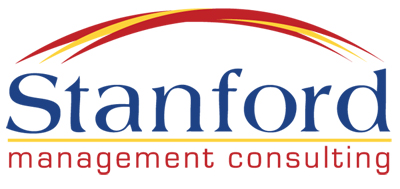 “Julia, why should I be concerned about having policy and procedures written for my business?”
“Julia, why should I be concerned about having policy and procedures written for my business?”
Policies and Procedures are the strategic link between the Company’s Vision and its day-to-day operations. They are one of the most important tools in your business because well written policies & procedures allow employees to understand their roles and responsibilities within predefined limits. Basically, policies & procedures allow management to guide operations without constant management intervention.
In order to understand why policies & procedures are so important we need to know what they are and differences between them.
What is a Policy?
Policies identify the key activities and provide a general strategy on how to handle issues as they arise. They are clear, simple statements on how your company conducts business. I like to think of ‘policies’ as the “What” and “Why” that guides the foundation and structure in our business. They set the boundaries for all operational decisions.
What is a Procedure?
The ultimate goal of every procedure is to provide a clear and easily understood plan of action required to carry out or implement a policy. Procedures identify who will do what, what steps they need to do, and what documents are used. A well written procedure will help eliminate common misunderstandings by identifying job responsibilities and establishing boundaries for the employees and management staff. Good procedures actually allow managers to be pro-active and prevent the company (and employees) from making costly mistakes. The procedure is the road map that guides you to your destination and keeps you from getting lost. I like to think of procedures as the “How” that supports all operational policies.
The top three major differences between policies & procedures are identified below:
Policies:
• Are general in nature
• Identify company rules
• Written using simple sentences & paragraphs
Procedures:
• Identify specific actions
• Explain when to take actions
• Shows how to complete forms
Why Have Policy and Procedures?
Policies & procedures are required when there is a need for consistency in your day-to-day operational activities. Policies and procedures also provide clarity to the reader when dealing with accountability issues or activities that are of critical importance to the company, such as, health & safety, legal liabilities, regulatory requirements or issues that have serious consequences.
You Have Policy and Procedures; Are They Working?
If you have already has established Policies & Procedures, how can you determine if they are meeting your needs? A few ‘Critical’ signs that your policies and procedures need to be reviewed and updated would include an increase in the number of accidents, higher turnover, or costly overruns. The workforce can also provide important clues that your company’s policies and procedures need to be reviewed. These clues could include more staff questions on ‘normal operations’ or a feeling of general confusion within a department or division. Employees may also be demonstrating inconsistency in their job performance and there may be an increase in the workforce’s stress levels. Finally, your customers may provide additional clues in the form of increasing complaints.
Benefits of Policy and Procedures
First, employees are provided with information that allows them freedom to carry out their job and make decisions within defined boundaries. Second, employees understand the constraints of their job without using a ‘trial and error’ approach. Third, policies & procedures enable the workforce to clearly understand individual & team responsibilities. Finally, clearly written policies & procedures allow managers to exercise control by exception rather than ‘micro-manage’ their staff.
Well-written policies & procedures benefit the company as well as the employee. From an employee perspective, the guidelines provided in policies and procedures allow workers to perform their jobs with respect and dignity. They provide guidance on how to handle issues properly as well as clearly identifying their job constraints. The organization benefits by allowing managers the freedom to concentrate on strategic issues because the policies and procedures are in place to guide the normal-day-to-day operations.
How Often Should Policy And Procedures Be Reviewed?
Policy and Procedures are never done! The PnP (Policy and Procedure Manual) is a living document that should be reviewed in totality annually. However, each time you have a problem or a consistent challenge you should ask yourself- Do we have a policy? If so, is it working? If not, do we need one? Your business is constantly changing and so should your policy and procedures.
If your policies and procedures are incomplete, outdated or inconsistent, then you are probably not driving the performance improvement you intended.
